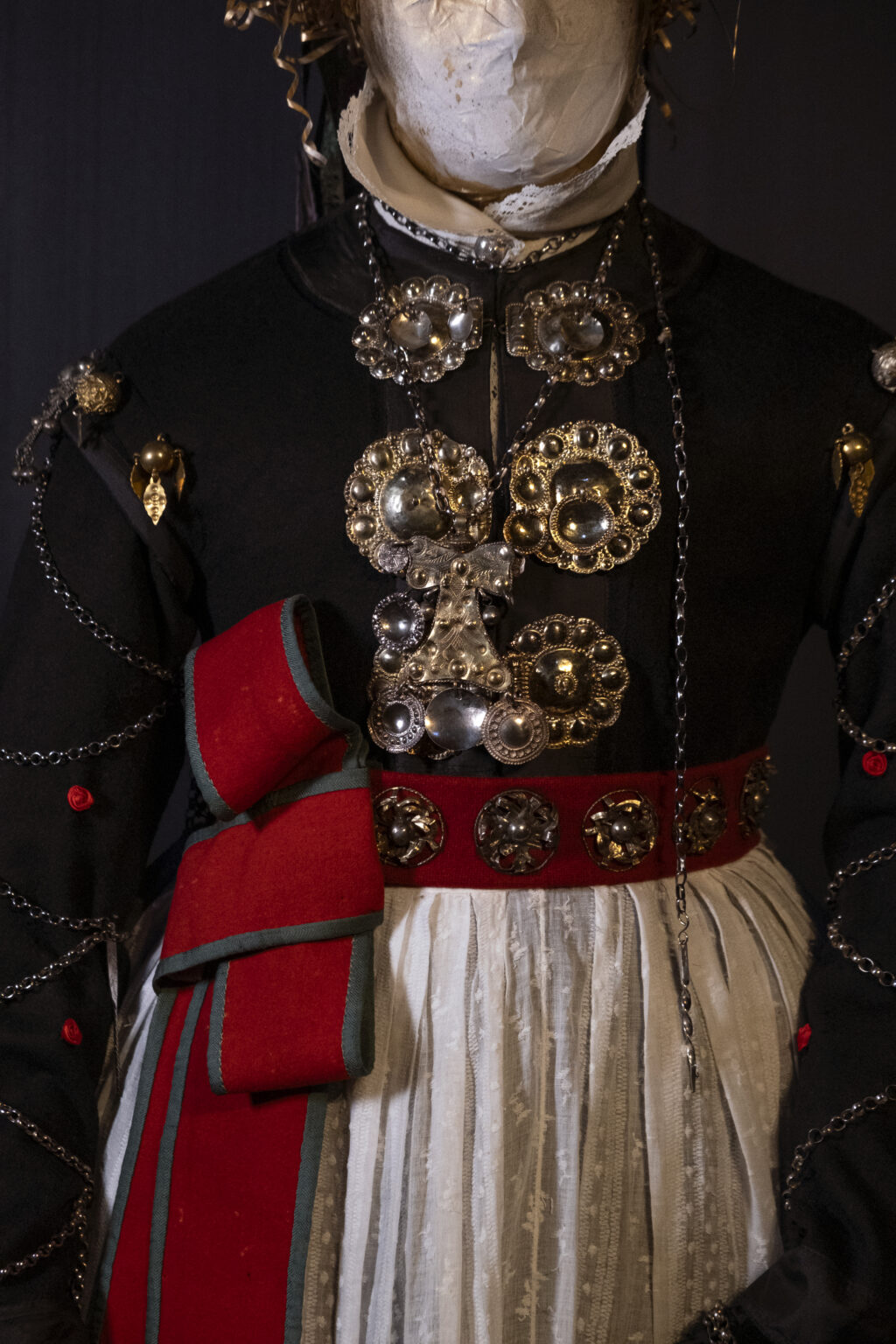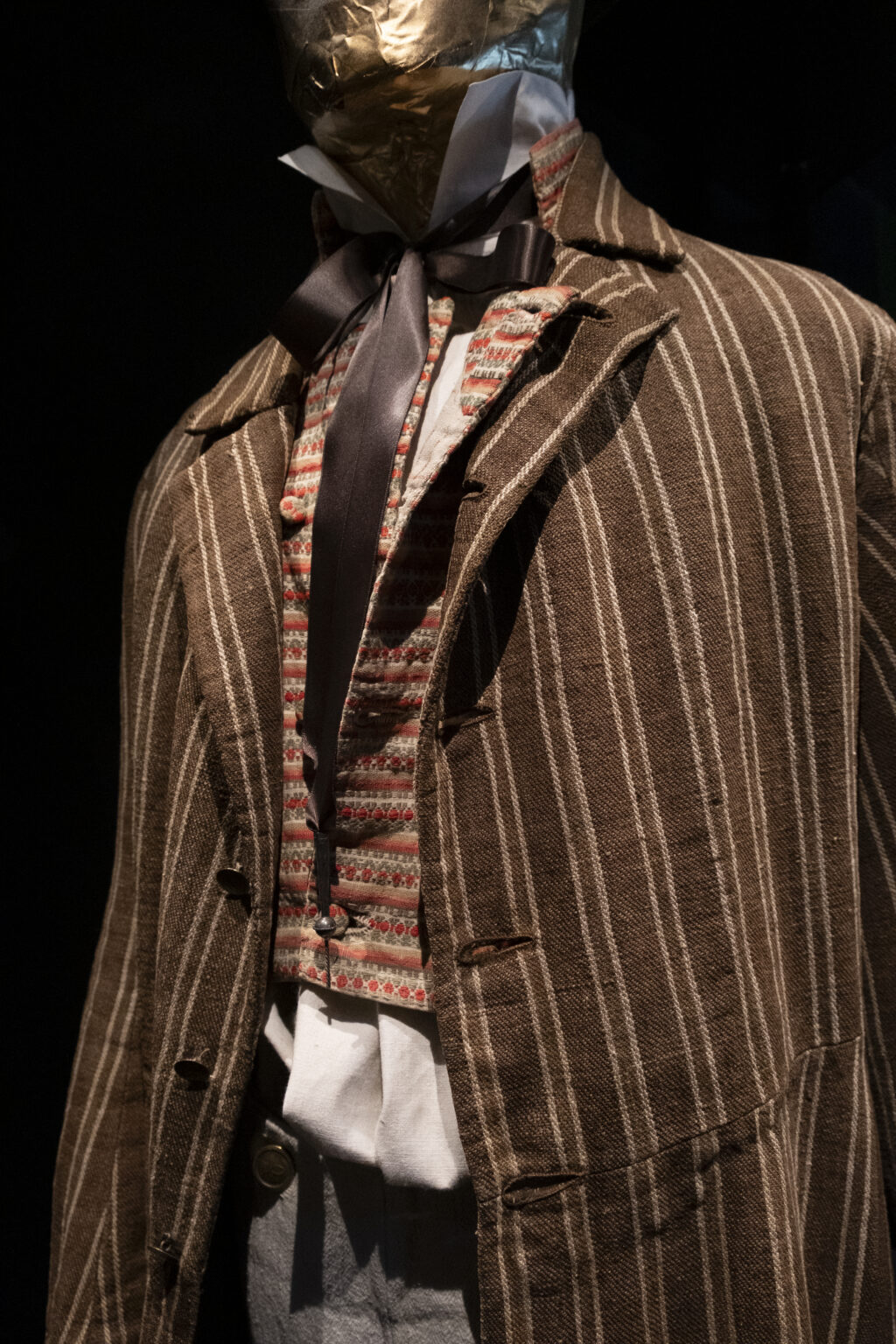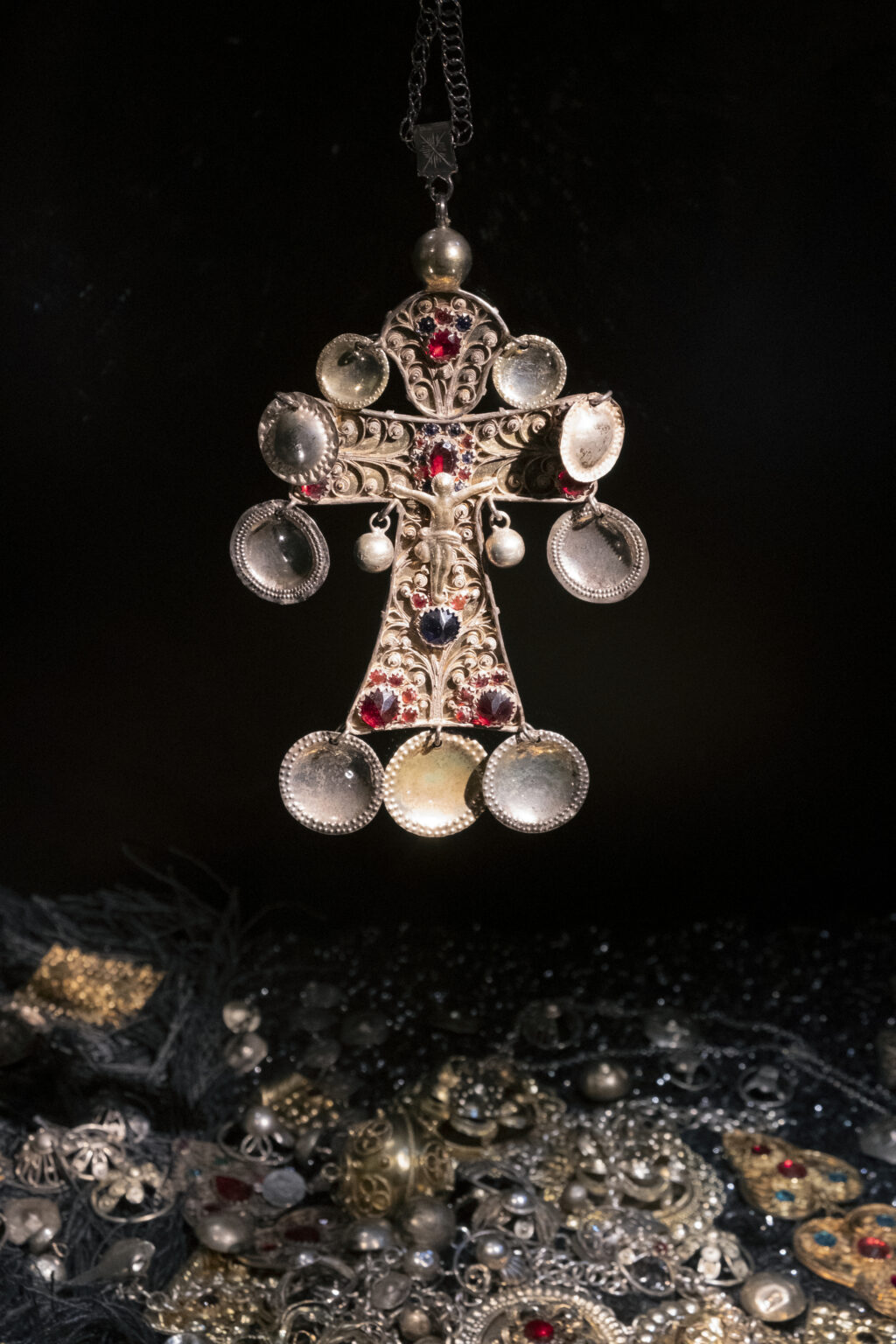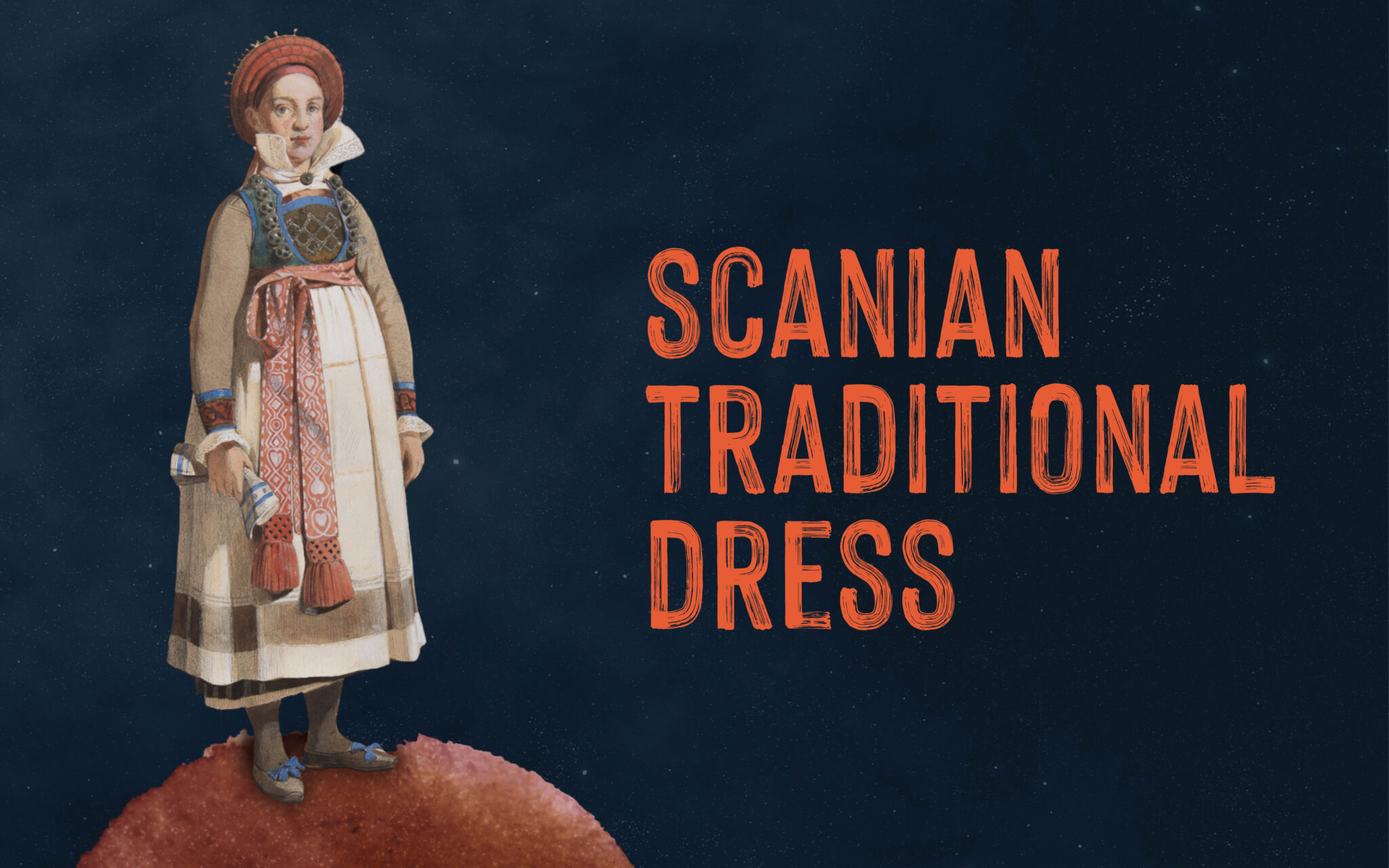The exhibition Scanian Folk Dress (Dräktmod – folkliga kläder från Skåne in Swedish) will let you discover both the main features and the finer details of folk dress in Scania.
Folk dress from Scania is among the most traditional forms of clothing in Sweden. Some garments have looked more or less the same for centuries. Often made from fabrics that were saved, inherited, and re-sewn to fit a new body and a new era, these clothes carry stories across generations. Pieces of traditional jewellery were passed down, sometimes preserved in its medieval forms, sometimes reworked to reflect changing fashions.

Historical Background
Since the late Middle Ages, the state has issued laws to regulate how people dressed. The last Swedish dress ordinance came in 1817. Clothing was also influenced by local traditions. In the old society of orders, dressing according to one’s gender, social and marital status, was expected. To stand out was seen as inappropriate or provocative.
In the 16th century, Scania was a prosperous region. Wealthy farmers could afford fine clothing and status items such as silver jewellery. The 17th century brought war and hardship. Scania became Swedish, and especially in the southeast, it turned from a central Danish province into a remote and isolated part of Sweden where Renaissance fashion influenced traditional dress for a long time.
In the 19th century, land reforms and a rising demand for agricultural goods improved the economy for many Scanian farmers. Rural clothing began to resemble urban styles—especially in western Scania, where ties to cities and other countries were stronger.


The exhibition is produced by Kulturen
Find the exhibtion:
Entrance to the exhibition is through the Helsingborg-Halmstad House (no. 22 on the visitor map). The exhibition is on the second floor. You can also enter the exhibition through the Ystad House (no. 26 on the visitor map) and go up to the second floor
